#criminalprocedure
Explore tagged Tumblr posts
Text
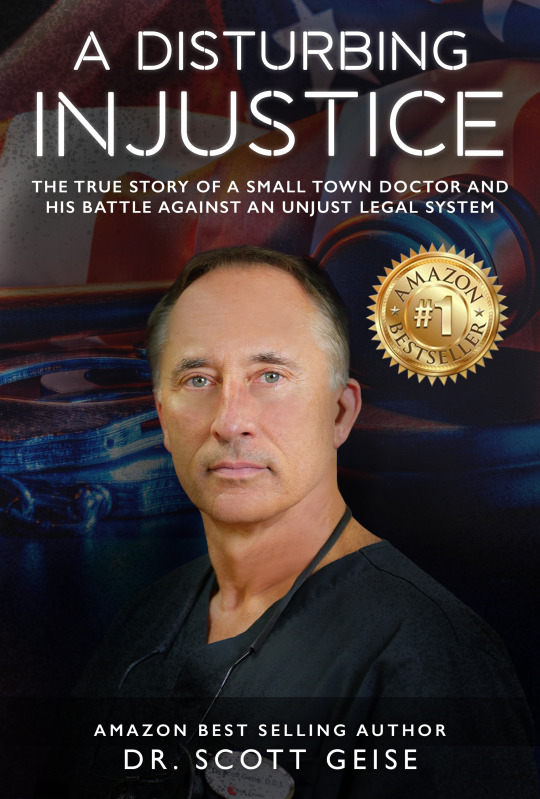
A Disturbing Injustice: The true story of a small town doctor and his battle against an unjust legal system by Scott Geise
A MUST READ story of a small town doctor and his battle against an unjust legal system. "In the blink of an eye, Dr. Scott Geise went from respected small-town dentist to convicted felon. His crime? Trying to provide the best care for his patients.
In this story you will find a chilling account of how an all-American success story became a nightmare of false accusations, legal manipulation, and ultimate betrayal. With raw honesty and dark humor, Geise recounts his journey from the heights of professional success to the depths of a federal prison cell.
This gripping memoir exposes the shocking flaws in our justice system, where innocence is no defense against the crushing machinery of federal prosecution. Geise's story is a stark warning: in a world where plea bargains have replaced trials, anyone can become a criminal overnight.
But this is more than just a cautionary tale. It's a testament to resilience, a father's love for his children, and one man's unwavering determination to reclaim his life and reputation. Geise's fight to restore his dental license and rebuild his practice will inspire readers to question the system and stand up for justice.
Fans of Bryan Stevenson's 'Just Mercy' and John Grisham's legal thrillers will be captivated by this true story of injustice and redemption. Geise's insider perspective on both the medical and legal professions offers a unique glimpse into two worlds most of us only see from the outside.
Heart-wrenching, infuriating, and ultimately uplifting, A Disturbing Injustice' is a must-read for anyone who believes in the American dream – and anyone who fears it might become a nightmare. Because as Geise's story proves, it really could happen to you."
Grab YOUR Copy NOW: https://amzn.to/3F1OJgd
#memoir#LawEthics&ProfessionalResponsibility#Family&HealthMalpracticeLaw#CriminalProcedure#ConflictOfLaws#BiographiesofMedicalProfessionals#HealthLaw#MalpracticeLaw#BiographiesofHoaxes&Deceptions#Bookboost#Mustread#Writerslift#Kindle#Kindleunlimited#TrueStory#Bestseller
1 note
·
View note
Text
People v. Gutierrez [GR Nos. 147656-58 (09 May 2003)]
A man appeals his conviction of three counts of rape, claiming consensual encounters, but the Supreme Court affirms the decision, emphasizing that the absence of physical injuries does not negate rape and that the victim's credibility and explanation for delay are sufficient evidence.
Facts:
Accused: Bernabe Gutierrez y Gutierrez
Victim: Gina V. Alcantara, his niece
Incidents: Occurred on July 24, 1999, July 30, 1999, and August 12, 1999
Location: Barangay Salaan, Mangaldan, Pangasinan
Circumstances: Gina and her sister Matet were living in Bernabe's house to care for their bedridden grandmother.
Allegations: Bernabe threatened Gina with a knife, forced her to undress, and raped her on three occasions.
Delay in Reporting: Gina did not report immediately due to fear for her life and her family's safety.
Disclosure: Gina confided in her uncle Boyet, who took her to her sister's house in Pasay City.
Formal Complaint: Filed on August 23, 1999; medical examination revealed hymenal lacerations.
Defense: Bernabe claimed the sexual encounters were consensual.
Trial Court: Found Gina's testimony credible, convicted Bernabe of three counts of rape, sentenced him to reclusion perpetua for each count, and ordered him to pay civil indemnity, moral damages, and exemplary damages.
Appeal: Bernabe argued his guilt was not proven beyond reasonable doubt and cited several trial court errors.
Issue:
Jurisdiction: Did the trial court err in assuming jurisdiction over the three counts of rape despite alleged defects in the Informations?
Decision Clarity: Did the trial court fail to state clearly and distinctly the facts and the law on which its decision was based?
Threat and Intimidation: Was the degree of threat, force, or intimidation sufficient to compel Gina to submit to Bernabe's advances?
Proof Beyond Reasonable Doubt: Did the prosecution fail to prove Bernabe's guilt beyond reasonable doubt?
Victim's Credibility: Did Gina's behavior after the alleged rapes undermine her credibility?
Medical Evidence: Was the trial court correct in concluding that the hymenal lacerations were consistent with Gina's allegations of rape?
Counsel's Diligence: Did Bernabe's counsel fail to exercise the required diligence in defending his client?
Ruling:
Jurisdiction: The Supreme Court held that the Informations were sufficient and that the trial court had jurisdiction.
Decision Clarity: The Court found that the trial court's decision clearly and distinctly stated the facts and the law on which it was based.
Threat and Intimidation: The Court ruled that the degree of threat, force, or intimidation was sufficient to compel Gina to submit to Bernabe's advances.
Proof Beyond Reasonable Doubt: The Court affirmed that the prosecution proved Bernabe's guilt beyond reasonable doubt.
Victim's Credibility: The Court held that Gina's behavior after the alleged rapes did not undermine her credibility.
Medical Evidence: The Court agreed with the trial court's conclusion that the hymenal lacerations were consistent with Gina's allegations of rape.
Counsel's Diligence: The Court found that Bernabe was bound by his counsel's conduct and that any alleged negligence did not warrant a different outcome.
Ratio:
Sufficiency of Information: The information was deemed sufficient as it contained necessary details, including the name of the accused, the designation of the offense, the acts constituting the offense, the name of the offended party, the approximate date, and the place of the offense.
Decision Foundation: The trial court's decision was well-founded, clearly stating the facts and the applicable law.
Intimidation and Moral Ascendancy: The Court explained that intimidation and moral ascendancy, especially by a close kin, could compel submission without physical resistance.
Victim's Testimony: Gina's consistent and emotional testimony, despite rigorous cross-examination, was deemed credible.
Delay in Reporting: The Court noted that it is not uncommon for rape victims to delay reporting the crime due to fear and threats from the perpetrator.
Counsel's Conduct: The Court reiterated the principle that a client is bound by his counsel's conduct.
Sentencing: The Court upheld the trial court's imposition of reclusion perpetua for each count of rape, in accordance with Article 266-B of the Revised Penal Code, as there were no mitigating or aggravating circumstances.
Damages: The awards for civil indemnity and moral damages were affirmed, but the award for exemplary damages was deleted due to the lack of an aggravating circumstance.
0 notes
Text
Bail Hearing Appeal in Criminal Procedure
In criminal law, bail is a mechanism that allows an accused person to be temporarily released from custody, typically pending trial or the final resolution of a case, in exchange for specific conditions or monetary guarantees to ensure their return to court. Bail serves as a balancing tool in criminal justice systems worldwide, promoting the principle that individuals should not be held in pretrial detention without a legitimate reason. Bail hearings, which determine whether an individual should be granted or denied bail, are critical steps in this process. If bail is denied, the accused may seek to appeal that decision through a bail hearing appeal.
This essay examines the process of a bail hearing appeal in criminal procedure, exploring its purpose, legal framework, procedural requirements, and the considerations courts take into account.
Purpose of Bail Hearings
Bail hearings serve the dual purpose of balancing the rights of the accused with the need to protect public safety and ensure the integrity of the judicial process. The principle of "innocent until proven guilty" underpins the argument for bail, ensuring that individuals are not punished before their guilt is established. Bail allows defendants to continue their lives—whether it be work, education, or family responsibilities—while awaiting trial, preventing the unnecessary detention of individuals who are presumed innocent.

However, in some cases, releasing an individual on bail may pose risks. For instance, there could be concerns that the accused will flee, fail to attend court proceedings, or pose a threat to public safety or witnesses. In such cases, courts can deny bail.
When bail is denied or set at conditions deemed unreasonable by the accused, the option to appeal the decision becomes crucial. The bail hearing appeal criminal procedure serves as a secondary review process that allows higher courts to reconsider the initial decision, ensuring that it was both lawful and reasonable.
Legal Framework Governing Bail and Bail Appeals
The legal framework governing bail and its appeal is typically derived from statutory provisions, constitutional guarantees, and case law, though it may differ from one jurisdiction to another.
In common law countries like the United States, the UK, Canada, and Australia, bail rights are often governed by both legislation (such as the Bail Act or Criminal Procedure Code) and constitutional provisions that ensure due process and personal liberty. For example, in the U.S., the Eighth Amendment protects individuals from excessive bail, ensuring that bail conditions should not be more onerous than necessary. Similarly, international conventions, such as the International Covenant on Civil and Political Rights (ICCPR), emphasize the right to liberty and protection against arbitrary detention.
Bail hearing appeals typically occur within a specific legal framework:
Initial Bail Decision: The trial court makes an initial decision on bail based on factors like the seriousness of the offense, flight risk, risk to public safety, and ties to the community.
Right to Appeal: If the defendant or prosecution disagrees with the decision, the next step is to file an appeal in a higher court. The right to appeal the bail decision is usually provided for in criminal procedure laws, and the appeal must be filed within specific timeframes.
Review Standard: The appellate court reviews the bail decision to ensure it was made correctly, based on the law and evidence. Courts may apply different standards of review, such as a "de novo" review (where the appellate court re-examines the facts and law as if it were the original decision-maker) or an "abuse of discretion" review (where the appellate court only overturns the decision if it was unreasonable or based on an error of law).
Procedural Requirements in Bail Appeals
The procedure for filing a bail appeal is typically straightforward but requires strict adherence to statutory rules. The following are common steps in the appeal process:
Notice of Appeal: The first step is for the defense or prosecution to file a notice of appeal. This document must be submitted within a prescribed time limit after the initial bail ruling and should indicate the grounds for the appeal.
Bail Application/Submission: Along with the notice, an application or legal submission outlining the arguments for why bail should be granted or modified is required. This application should include supporting evidence, such as character references, evidence of stable employment, or proof of residence, to demonstrate that the accused is not a flight risk or danger to the community.
Court Review: Once the notice and application are submitted, a higher court (such as a district court, appellate court, or supreme court) reviews the bail decision. This review could be based solely on the written submissions or involve an oral hearing where the defense and prosecution present their arguments.
Factors Considered in Appeals: The appellate court will examine various factors when deciding on the appeal. These include:
Flight Risk: Is the defendant likely to flee the jurisdiction and not return for trial?
Public Safety: Does the accused pose a threat to individuals, witnesses, or the public?
Severity of the Charges: More severe offenses, particularly those involving violence or large-scale fraud, may justify higher bail amounts or the denial of bail.
Prior Criminal History: A history of prior offenses, especially for the same or similar charges, can influence the court's decision.
Strength of the Evidence: If the evidence against the accused is overwhelming, this may lead to a decision to deny bail to ensure that justice is served.
Appeal Outcome: After reviewing the submissions and arguments, the appellate court can:
Affirm the lower court’s bail decision, leaving it unchanged.
Modify the bail conditions (for example, reducing the monetary amount or adjusting the restrictions imposed on the accused).
Considerations in Bail Appeals
When considering a bail appeal, courts strike a delicate balance between competing interests. On one hand, there is a need to protect the public and ensure that accused persons return to court for trial. On the other hand, personal liberty and the right to a fair trial are also significant constitutional rights that must be protected. Courts are cautious not to overstep constitutional protections, especially the presumption of innocence.
Judges typically rely on a set of guiding principles when deciding bail appeals:
Presumption of Innocence: The accused remains innocent until proven guilty, and detention without trial contradicts this fundamental principle. Therefore, bail is usually granted unless the prosecution can show compelling reasons why detention is necessary.
Proportionality: Bail conditions, including the monetary amount or restrictions, must be proportionate to the offense and the risks posed. Excessive or unreasonable bail conditions may amount to pretrial punishment, which is against constitutional guarantees.
Risk Management: Courts also consider whether the risks associated with releasing the accused can be managed through other means, such as electronic monitoring, house arrest, or travel restrictions.
Conclusion
Bail hearing appeals are critical in the criminal justice system because they provide a mechanism for reviewing decisions that may affect a defendant's fundamental right to liberty. By allowing higher courts to scrutinize bail decisions, appeals ensure that the rights of the accused are protected while balancing public safety concerns
0 notes
Text
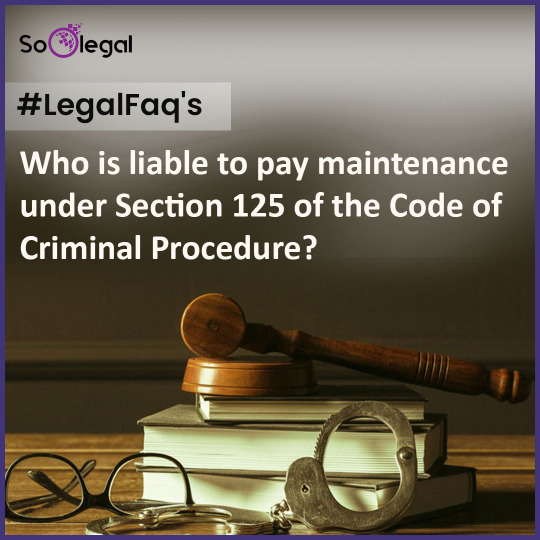
The husband, father, or son is liable to pay maintenance to their wife, children, or parents who are unable to maintain themselves financially.
For More
0 notes
Text
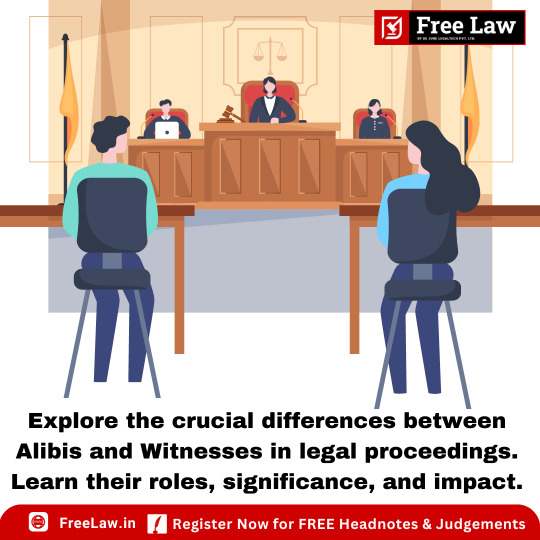
Alibi vs. Witness: Key Differences in India
Learn the difference between these two important legal concepts at freelaw.in.
0 notes
Text
If you've ever wondered about the legal distinctions between being under arrest and being detained for questioning, this comprehensive and insightful article from ProfessionalLawyer.me is a must-read!
0 notes
Text
Courtroom Drama: Murderer Reacts to Maximum Sentence
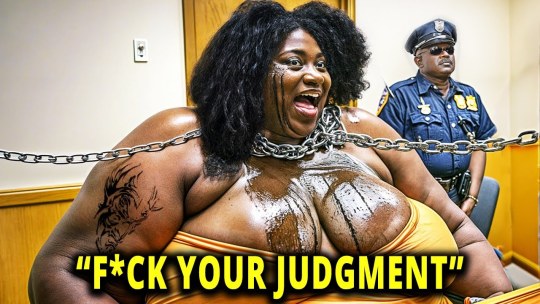
In a courtroom filled with tension and anticipation, John Doe, a convicted murderer, faced his final judgment. The air was thick with the weight of the moment as the judge prepared to deliver the maximum sentence. Family members of the victim, media personnel, and curious onlookers crowded the room, all eyes focused on the defendant.See more...
#MurderTrial #LifeSentence#CourtVerdict #JusticeServed#CrimeAndPunishment#LegalProceedings #CriminalProcedures#CriminalProcedures #JudicialSystem#DefendantReacts #MaximumPenalty#LifeInPrison #CourtroomDrama#SentencingHearing #TheLawPrevails#SeriousCrimes
0 notes
Photo
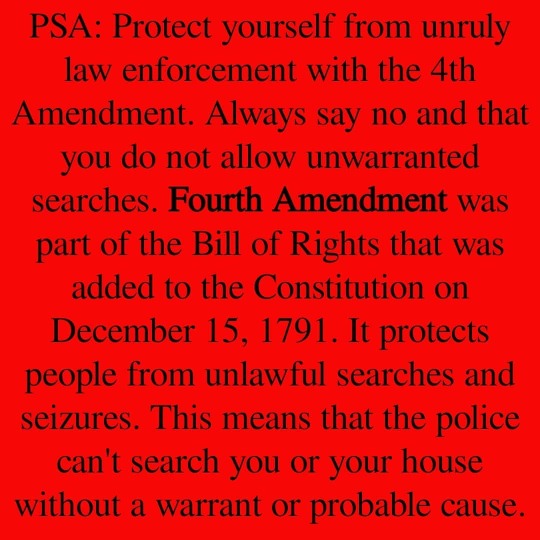
Say NO to unruly frisking or unreasonable searches by law enforcement without a warrant. Do not let them trick you when they ask for your permission. Do not say "OK" or "Yes". . . . . . . #criminaljustice #constitution #constitutionalrights #4thamendment #5thamendment #6thamendment #criminallaw #criminalprocedure #lawschool #lawstudentlife #cops #lawyersofinstagram #lawyerlife #author #entrepreneurlife #conlaw #lawschoollife #fundamentalrights #equaljustice #criminaljusticereform #police #lawenforcement #supremecourt #mirandarights #newbooks #legalwriting https://www.instagram.com/p/CPcP1n7hmMpDxuVKhs7DCC3gdiI2kIX3v_swO40/?utm_medium=tumblr
#criminaljustice#constitution#constitutionalrights#4thamendment#5thamendment#6thamendment#criminallaw#criminalprocedure#lawschool#lawstudentlife#cops#lawyersofinstagram#lawyerlife#author#entrepreneurlife#conlaw#lawschoollife#fundamentalrights#equaljustice#criminaljusticereform#police#lawenforcement#supremecourt#mirandarights#newbooks#legalwriting
0 notes
Photo
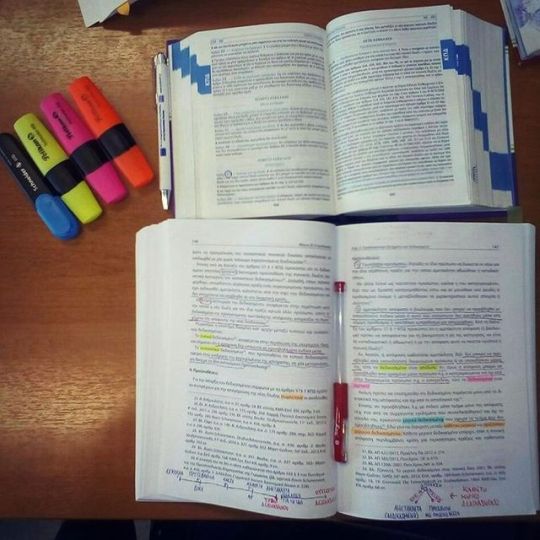
You know things get serious for finals when: a) you have to go to the library to be able to focus b) everything on the page starts being important c) you have to make visual representations to comprehend what you just read d) all of the above Criminal procedure, why are you doing this to me? #study #studying #studygram #studyhard #studynow #studywithme #student #unilife #collegelife #lawschool #criminallaw #criminalprocedure #university #library #books #notes
#criminallaw#unilife#criminalprocedure#books#studygram#study#notes#studying#student#collegelife#library#studyhard#lawschool#studynow#studywithme#university
0 notes
Link
15-year-old girl dead, two teens charged in accidental shooting in Lockland Source link Orbem News #15yearold #Abuseofthelegalsystem #accidental #Articles #charged #Crimes #Criminalprocedure #Dead #Deception #girl #Humanbehavior #Law_Crime #Lockland #NationalRegisterOfHistoricPlacesInHamiltonCounty #ObstructionOfJustice #Ohio #shooting #teens #UnitedStates
0 notes
Text
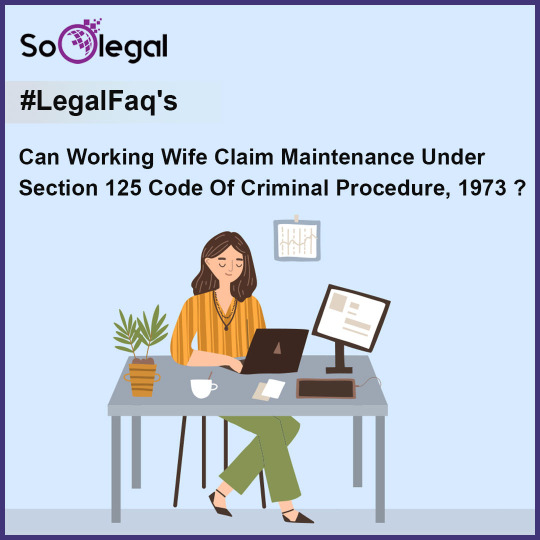
Yes, a divorced wife can claim maintenance under Section 125 of the Code of Criminal Procedure.
Read More
#divorced#working#wifes#Claims#maintenance#Section125#undersection125#criminalprocedure#legalhelp#lawyers#SoOLEGAL
0 notes
Text
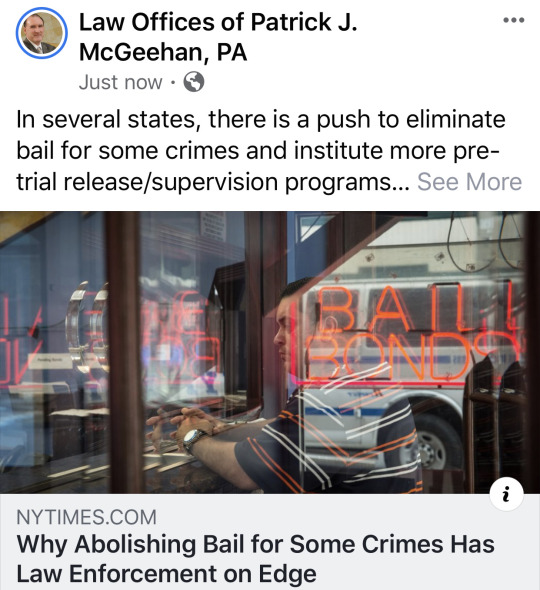
In several states, there is a push to eliminate bail for some crimes and institute more pre-trial release/supervision programs. The reaction runs the gamut from from out of control crime to no change in crime. Tomorrow, New York will see a big change in their bail system. Unlike other states, New York has a list of crimes defendants must be released on. What do you think?
#crime #criminaljustice #cops #sheriff #thinblueline #police #lawenforcement #arrest #misdemeanor #felony #dwi #criminalprocedure #policeofficer #attorneys #duilawyer #lawyer #attorney #lawyers #criminaldefense #criminalcharges #criminallaw #violentcrime
https://www.google.com/amp/s/www.nytimes.com/2019/12/31/nyregion/cash-bail-reform-new-york.amp.html
0 notes
Photo

Title:- Certified Cell-Phone Examiner-ICFECI
We do our utmost for adequate representation of defendants, leaving no stone unturned, but stay within the broad definitions of laws, especially following #FederalRules of #CriminalProcedure in our investigative activities for the benefit of our clients.
view more:- https://www.icfeci.com/computer-cell-phone-forensics/
#computer forensics analyst texas#computer forensics analyst dallas#computer forensics analyst texas dallas
0 notes
Text
Brilliant Closing Statement! #lawyer #triallawyer #closingstatement #courtroom #trialattorney #criminaldefense #criminalprocedure #fightthefight #trustalexanderlaw

0 notes
Text
ABAJournal
#NewYork considers changing discovery rules that often leave defense lawyers in the dark. #criminalprocedure https://t.co/RTQ0ONz7UT via @ABAJournal. pic.twitter.com/iYRl1PMNhl
— ABA Journal (@ABAJournal) May 26, 2018
via Blogger https://ift.tt/2s5sZHF https://ift.tt/20qd6Z0
0 notes